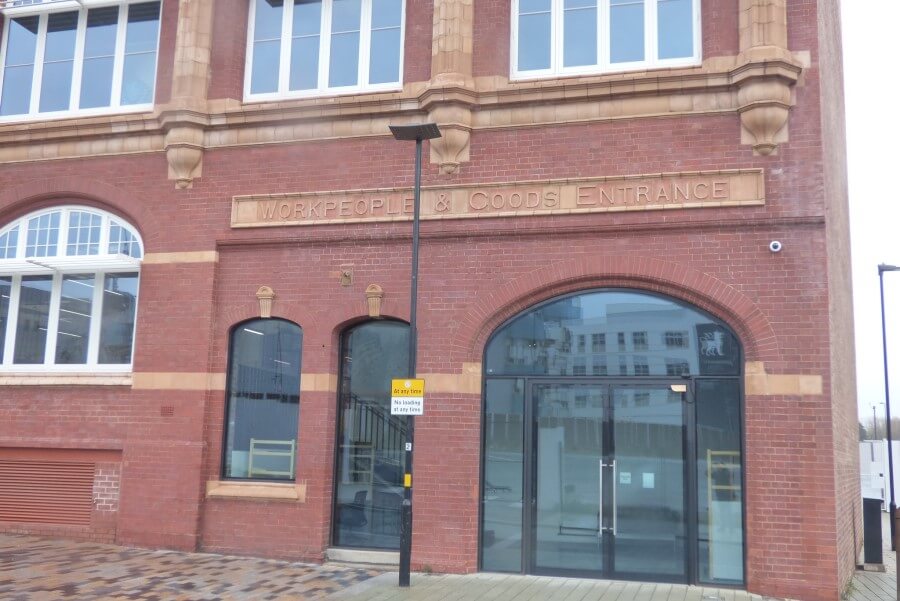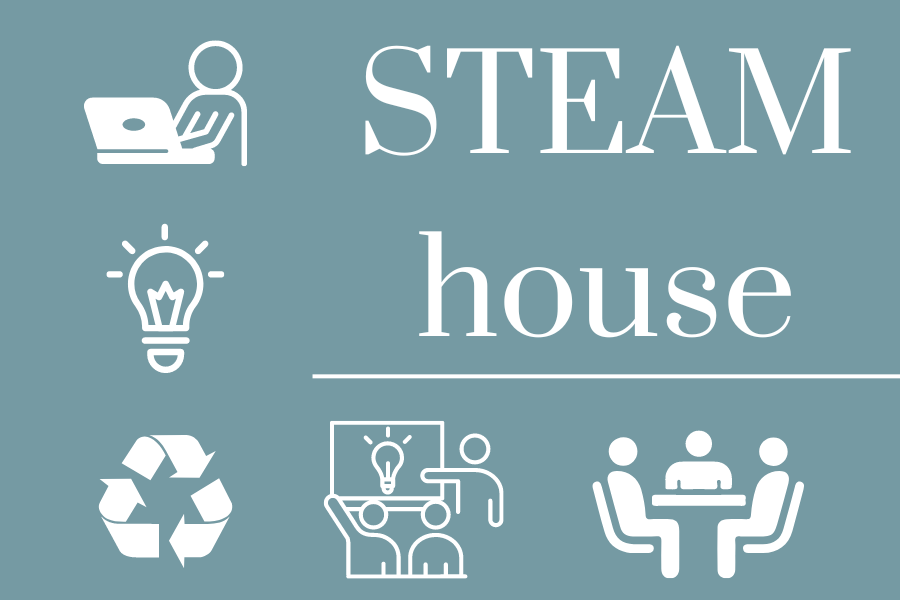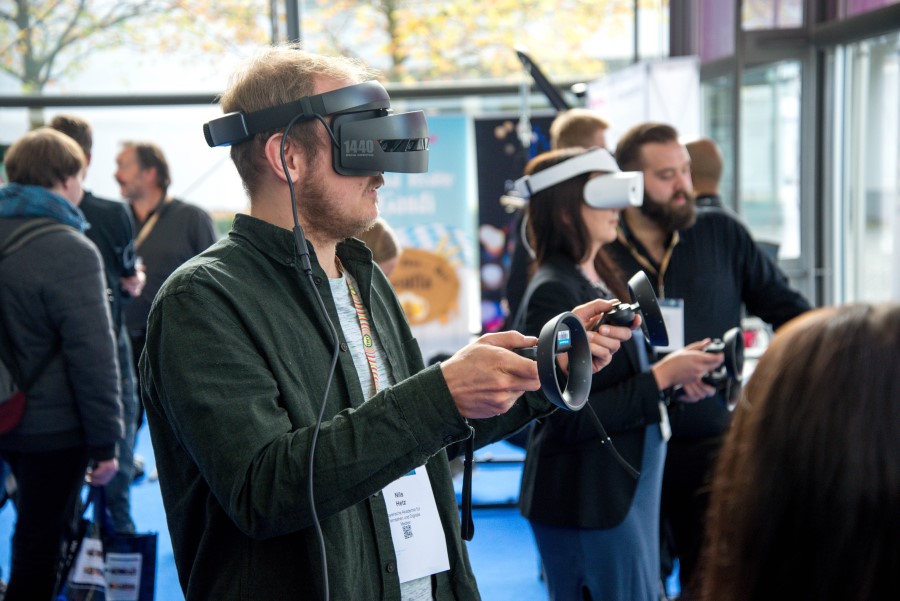In this policy briefing, Juliane Schwarz discusses the STEAMhouse, a Birmingham City University (BCU) asset, exploring its contribution to improving economic performance and social inequality in our region. Special thanks to Professor Joanna Birch, Director of Innovation, Enterprise and Employability at Birmingham City University, and STEAMhouse staff for their contributions.
What are the benefits of connecting university innovation with firms and the public sector?
As a region, the West Midland, we are not fully leveraging our intellectual capital, assets and capabilities for economic growth and social development because of a nationally persistent communication gap between university-based R&D and research users, including firms and public sector organisations. This means we are not fully leveraging our intellectual capital, assets and capabilities for economic growth and social development.
The UK is committed to increasing investment in Research, Development and Innovation to 2.4 per cent of GDP (the OECD average) and this will require better alignment between universities and these stakeholders in collaborative innovation efforts to improve our economy and our society.
The benefit for innovation from a STEAM approach
This policy briefing is part of a WMREDI project looking at university STEM assets in the West Midlands. The project maps the region’s university infrastructure, focusing specifically on Science, Technology, Engineering, and Mathematics (STEM) assets, and compares the commercial and non-commercial impacts of the assets, identifying any social/environmental/economic trade-offs.
This policy brief focuses on STEAMhouse, a Birmingham City University (BCU) asset, exploring its contribution to improving economic performance and social inequality in our region. BCU has invested £4.5M in the new STEAMhouse building, renovating the disused Belmont Works and supporting the re-generation of Birmingham’s Eastside.
View a policy briefing on Tyseley Energy Park
View a policy briefing on the Warwick Manufacturing Group
View a policy briefing on the Manufacturing Technology Centre
STEAMhouse, the centre for technology, innovation, creative thinking, prototyping and business development at BCU, aims to find the most innovative solutions to today’s challenges by encouraging collaboration of the Arts with Science, Technology, Engineering and Maths (STEAM) to create innovation and opportunities in the West Midlands.
The briefing is based on five interviews with various members of STEAMhouse staff plus publicly available information, such as STEAMhouse website, regional audits, impact studies and news articles. STEAMhouse is one of four case studies our empirical research is focussing on. It aims at building an understanding of the specific regional contribution the fixed asset makes and the factors that constrain innovation, productivity and growth.

What does STEAMhouse do?
STEAMhouse is a centre for collaborative innovation at BCU. It aims to boost local growth by removing barriers to innovation, such as cost and lack of equipment and gives access to aid the development of new products and services. It encourages experimentation and provides support for businesses of all sizes (from sole traders to large companies). It offers production and prototyping facilities for technologists, artists, designers, scientists and innovators. It defines itself as a ‘multi-disciplinary community that drives business growth and overcomes commercial and societal challenges through collaboration and innovation.’
Based on the STEAM framework, STEAMhouse aims to spur innovation between the arts, science, technology, engineering and maths. It adds the Arts to STEM and thus enhances knowledge exchange and collaboration to bridge gaps created by institutional and ideological differences in these very diverse subjects.
STEAMhouse was established in partnership with Birmingham City University and Eastside Projects, a Birmingham-based arts organisation. The development of the concept started in 2014 to improve the overarching innovation infrastructure in Birmingham and the West Midlands by involving the Arts and the creative sector in innovation and business development.
Why boost R&D in the West Midlands?
The UK Innovation Survey 2013, placed the West Midlands 6th of 9 regions in terms of the percentage of innovation-active businesses and the Higher Education Funding Council for England reported that the Greater Birmingham and Solihull Local Enterprise Partnership (GBSLEP) area was performing below the national average in terms of SMEs involved in collaborative innovation.
A lack of infrastructure (production spaces and maker spaces) prevented creatives to get involved in investment processes that have been available for STEM-based innovation. The GBSLEP made a strong case in its Strategy for Growth to invest in STEAM skills to strengthen the innovative capabilities of the region. In its pilot phase or Phase I, the project secure more than £3 Mio funding from the ERDF and Arts Council through the Creative Local Growth Fund (CLGF) by 2020. In phase II, investments of £72 million, including £15 million in grant funding, went into the renovation and development of the disused Belmont Works and the creation of a new linked building for STEAMhouse.
The building (demolished now) hosted 15,000 sq feet of co-working spaces, project spaces and a new makerspace (the Production Space) equipped with 3D printers, laser cutting machinery, virtual reality technology and printing studios.
What is the Impact of STEAMhouse?
Due to its approach to innovation through collaboration between STEM subjects and the arts, STEAMhouse has attracted some substantial funding (including the European Union). STEAMhouse Phase 1 is featured at Interreg Europe as an example of good practice of inspiring and tested policy solutions.
It is also discussed in reports discussing it as a model of innovative thinking and approaches. For example, in the State of the Relationship report (2019) compiled by the National Centre for Universities and Businesses, STEAMhouse features as a case study with particular emphasis on STEAMlabs where individuals address challenges faced by society in a two-day hack-style event.
In the process of approving its business case, it was projected that the STEAMhouse, including the Belmont Work, will generate an overall benefit-cost ratio of 3.4. and as such it was evaluated to demonstrate a high value for money. There have been, however, few publicly available independent impact assessments of STEAMhouse conducted since its inception.
STEAMhouse is cited as a centre of excellence and one of the major instruments to support the West Midlands Combined Authority (WMCA) placed based R&D and innovation strategy.
The Arts Council England published an Evaluation of the Creative Local Growth Fund (CLGF) in 2020. STEAMhouse is one of nine CLGF-funded projects that received altogether £18.3 Million in cash funding. The evaluation concluded that on an aggregate basis across eight of the nine CLGF projects:
- The programme outperformed all of its targets for the ERDF and ESF.
- All CLGF led directly to new local partnerships or deeply strengthened existing ones in particular with Higher Education Institutions.
- CLGF projects achieved a high degree of funding leverage, going beyond the cash funding obtained from ERDF/ESF.
- The availability and access to physical space are highly beneficial for artists.
- As are training, skills and the development of confidence and resilience.
- However, CLGF seems not to have a significant impact on the LEPs’ perception of arts and culture within the economic growth agenda, mainly remaining or reinforcing the arts and culture sector in areas where it is seen as an important sector.
- Despite the strong performance of its original objectives, the costs of achieving these were relatively high and the economic value of CLGF was short of the resources invested. However, the author emphasises that standard metrics of growth, such as employment, do not perfectly suit the cultural and creative sector and that the GVA forecast for 2024 might equal 152% of the value of the inputs to the programme. In addition, GVA only captures monetizable and quantifiable benefits but not wider positive effects such as well-being and other social impacts.
Oxford Economics, in their review of the socio-economic impact of Birmingham City University (BCU) and looking at 2017/18 data, concludes that BCU ‘makes a substantial contribution to the prosperity and culture of Birmingham, the West Midlands, and the United Kingdom as a whole’ and they conclude many of these are long-term impacts which will carry benefits to the region for years to come.’
STEAMhouse features strongly in terms of how it fosters innovation across Birmingham and the wider West Midlands economy. It is commented that after 12 months of operation in 2018, STEAMhouse had 249 registered members, received over a thousand visitors a month, and helped create 45 new products and services. STEAMhouse Phase 1 has delivered a valuable and well-utilised service to local innovation and product development, there was a scope to expand its offering and thus STEAMhouse Phase 1.5 was developed with a focus on digital enabling technology by adding a virtual reality space and Computer Aided Design (CAD).
This blog was written by Dr Juliane Schwarz, Research Fellow, City-REDI, University of Birmingham.
Disclaimer:
The views expressed in this analysis post are those of the authors and not necessarily those of City-REDI or the University of Birmingham.
To sign up for our blog mailing list, please click here.


